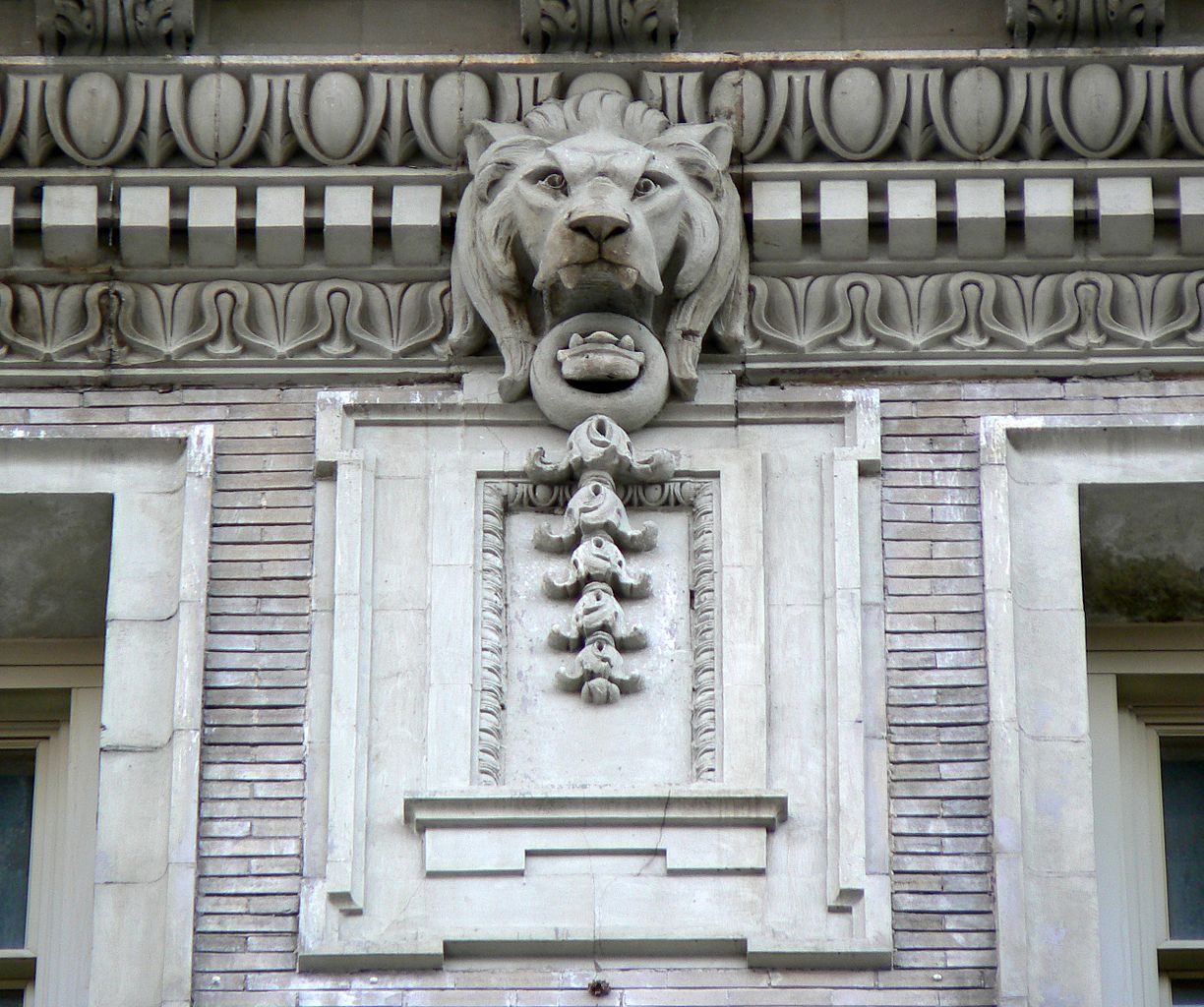#7023. Lion Mascarone on a Classical Facade with Combined Stone Finishing

This architectural element represents an impressive fragment of a classical facade with an expressive lion mascarone figure. The stone sculpture of a lion, located in the upper part of the composition, serves as a powerful decorative accent. Its face with an open mouth, from which a ring hangs, reflects the traditions of Renaissance and Baroque architecture, where zoomorphic elements were often used as a symbol of strength and protection.
The facade demonstrates magnificent stonework with multi-level relief. The upper part is decorated with a classical cornice featuring egg and dart molding (Ionic cymatium) and denticles, which gives the structure visual weight and completeness. Below the lion mask is a vertical decorative panel with a cascading ornament, framed by rectangular protrusions.
The side parts of the facade are finished with brickwork, creating an interesting contrast with the smooth stone surfaces of the central part. Such alternation of textures is a technique that can be successfully adapted in modern facade design, giving the building character and visual interest.
This architectural element demonstrates how local accents can transform a utilitarian facade into a work of art. Using similar decorative solutions on a reduced scale can become an interesting technique when designing modern buildings, creating references to classical architectural tradition.